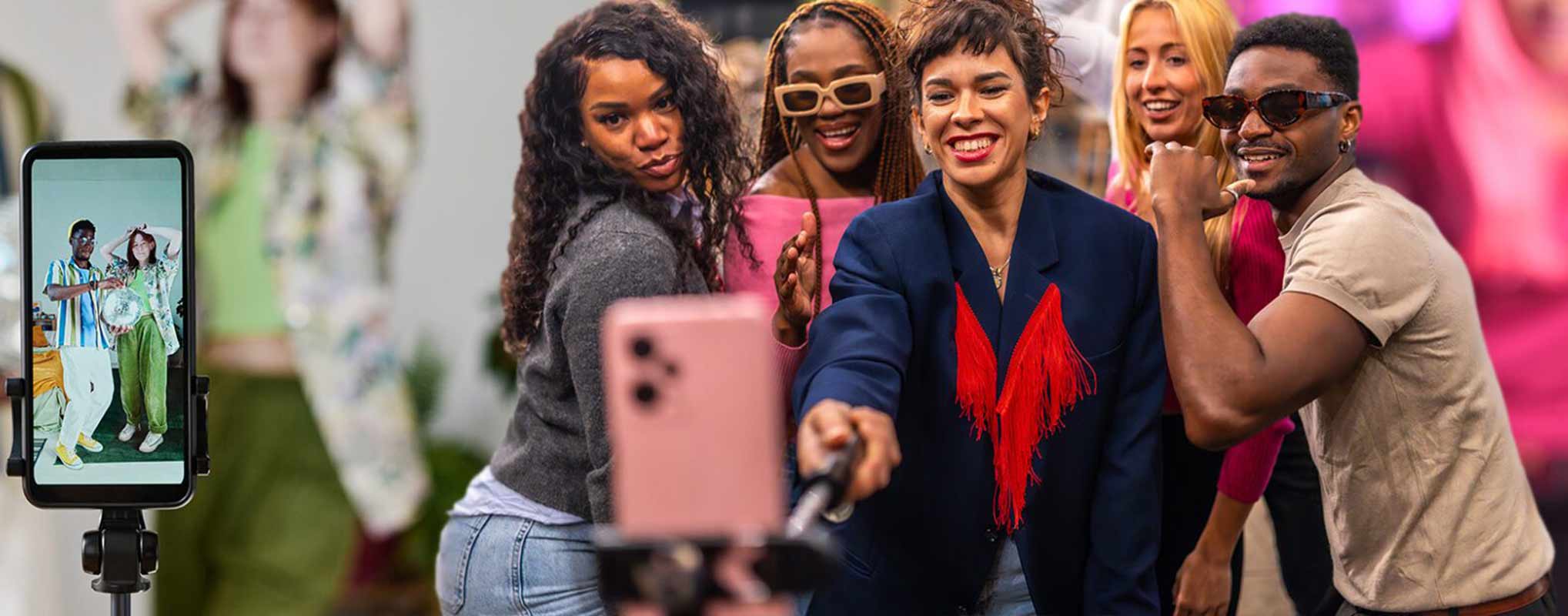
Frame by Frame
The Art and Science of Stellar Storytelling

By Gillian Schuler on February 1, 2025

TikTok is here to stay! For a few more days, that is. Given the real possibility of us losing the app here in the US, let’s take a look at how that would affect video marketing. TikTok has been at the forefront of ad displays and branded content since its’ meteoric rise in popularity. Whether it’s corporate videos, commercials, or viral videos, companies and organizations might just have to make some adjustments if the ban happens.
If were to be banned, it would definitely shake up the world of social media video production. Here’s a breakdown of what we could expect and how brands and creators might adapt.

Instagram Reels: Let’s be real — Instagram has been ready for this moment. As TikTok’s biggest competitor, Reels would probably see an explosion in users and creators. To be fair, reels has come a LONG way in terms of usability and competitiveness with TikTok’s UI.
YouTube Shorts: Don’t sleep on YouTube Shorts either. YouTube has been doubling down on short-form video, and with TikTok out of the picture, it could accelerate its rise. YouTube’s well-established video platform and searchability make it a natural place for TikTokers to migrate.
Snapchat Spotlight: Snapchat, while often flying under the radar, has been putting more focus on its Spotlight feature. With its younger Gen Z audience and existing video-sharing tools, Snapchat could capture some of TikTok’s audience, especially those craving fast, fun content. While we don’t see this being a direct replacement for TikTok, it could likely help fill the massive void this ban would result in.
Triller or Clash??: Other apps like Triller or Clash (which has been gaining traction) could also see a bump in adoption. These apps are aiming to fill the TikTok-sized hole, so it’s worth keeping an eye on them.
 Video Production Will Evolve
Video Production Will EvolveVertical Video Isn’t Going Anywhere: One thing TikTok made clear is that vertical video is here to stay. Other platforms, like Instagram Reels, YouTube Shorts, and Snapchat, will continue to prioritize vertical videos, so if you’ve been creating in that format, you’re ahead of the curve.
Short-Form Video Is Still King: TikTok’s ability to pack a punch in 5-to-59-seconds has transformed the way we engage with content. Even without TikTok, short-form video is going to keep growing. People want quick, entertaining content, and that’s not going to change. Whether it’s Instagram Reels, YouTube Shorts, or Snap’s Spotlight, this style of content is here to stay.
Adapting to Other Platforms: Brands and creators who’ve relied heavily on TikTok will have to adjust to the unique culture and algorithms of other platforms. For example, Instagram tends to favor more polished content compared to TikTok’s raw, “authentic” style, so you may need to tweak your approach depending on where you’re posting.
Here is an example of a Social Media Advertisement that our company produced for a household product called FlushGuard:
Influencers Will Adapt, But It Won’t Be Seamless: Influencers who built their following on TikTok will now need to diversify. Instagram Reels and YouTube Shorts will likely be their go-to options, but their TikTok followers may not immediately follow them to new platforms. It could take time for influencers to rebuild that same level of engagement elsewhere.
Brand Collaborations Might Shift: As TikTok fades (perhaps temporarily), brands might shift their influencer marketing focus toward platforms like Instagram or YouTube. With TikTok’s user base spread across other apps, there may be an increased emphasis on cross-platform collaborations to maximize reach.
 Audience Behavior Will Shift, Too
Audience Behavior Will Shift, TooGen Z and Millennial Audiences Will Migrate: TikTok has become the go-to platform for younger audiences, particularly Gen Z. If TikTok gets banned, expect these groups to flock to Instagram Reels or YouTube Shorts, but the shift might not be instant. It may lead to a bit of fragmentation as people spread their time across multiple platforms.
Cross-Platform Consumption: It’s also likely that users, especially those who grew up on TikTok, will start consuming content across a wider range of platforms. For creators, that means thinking about how to repurpose content — Instagram, YouTube, and Snapchat are all going to become major spots for video creators.
 Marketing & Ad Spends Will Change
Marketing & Ad Spends Will ChangeMore Budget to Instagram, YouTube, and Snapchat: If TikTok is no longer a player, advertisers will likely divert their budgets to Instagram, YouTube, and Snapchat. These platforms already offer highly engaging video ad formats and will likely continue to improve and evolve to capture TikTok’s share of the market.
E-Commerce Push on Other Platforms: TikTok’s success with social commerce — the ability to shop directly through videos — has set a precedent. Platforms like Instagram and YouTube have already integrated e-commerce features into their video content, and we can expect these features to become even more robust if TikTok is no longer around.
 The Loss of TikTok-Specific Trends
The Loss of TikTok-Specific TrendsViral Challenges Might Distribute Across Platforms: TikTok’s viral challenges and memes have defined its culture. A ban might dilute that centralized viral energy, but expect similar trends to pop up across other platforms, though they might not be as unified or widespread.
Collaborative Content Will Find New Homes: TikTok’s Duets and Stitches have been a huge draw for creators. These interactive features allow users to collaborate easily. Expect other platforms to start incorporating similar tools to drive engagement, or we could see new collaborative trends pop up.
 User-Generated Content Will Thrive (in new places)
User-Generated Content Will Thrive (in new places)UGC Will Move to Other Platforms: TikTok has been a hub for user-generated content (UGC), and brands have relied on TikTok to fuel UGC campaigns. If TikTok is banned, expect UGC to migrate to other platforms like Instagram and YouTube. The community-driven, creative spirit of TikTok will likely carry over, but with slight differences in how these other platforms handle content creation and interaction.
 Global Reach Could Become More Local
Global Reach Could Become More LocalTikTok’s Global Nature May Fragment: One of TikTok’s strongest points was its ability to unite people globally around the same viral trends. Without TikTok, trends might become more localized. While Instagram and YouTube have global reach, the mass, cross-border viral moments that TikTok engineered could become less centralized, with trends taking longer to catch on across regions.
If TikTok were banned, it would definitely be a huge disruption in the social media video marketing space. But video marketing isn’t going anywhere. Platforms like Instagram Reels, YouTube Shorts, and Snapchat Spotlight will quickly step up to capture the short-form video momentum. For brands and content creators, it’ll be a matter of adapting to the unique features, audiences, and content styles of these platforms.
Whether it’s at home or in our state of the art Production Studio, content creation for your business shouldn’t slow down as a result.
In the end, the trend toward short, snappy, creative videos is not a TikTok phenomenon; it’s a shift in how people consume content. Wherever people go, video will continue to reign as the most engaging form of media — and the strategies for creating, sharing, and monetizing video content will keep evolving. Click here to continue reading about Social Media Marketing…
Would you like help creating kick-ass social media content? Learn more about Awakened Films’ Social Media Marketing packages in New Jersey or speak with a video professional today. Let’s crush social in 2025!